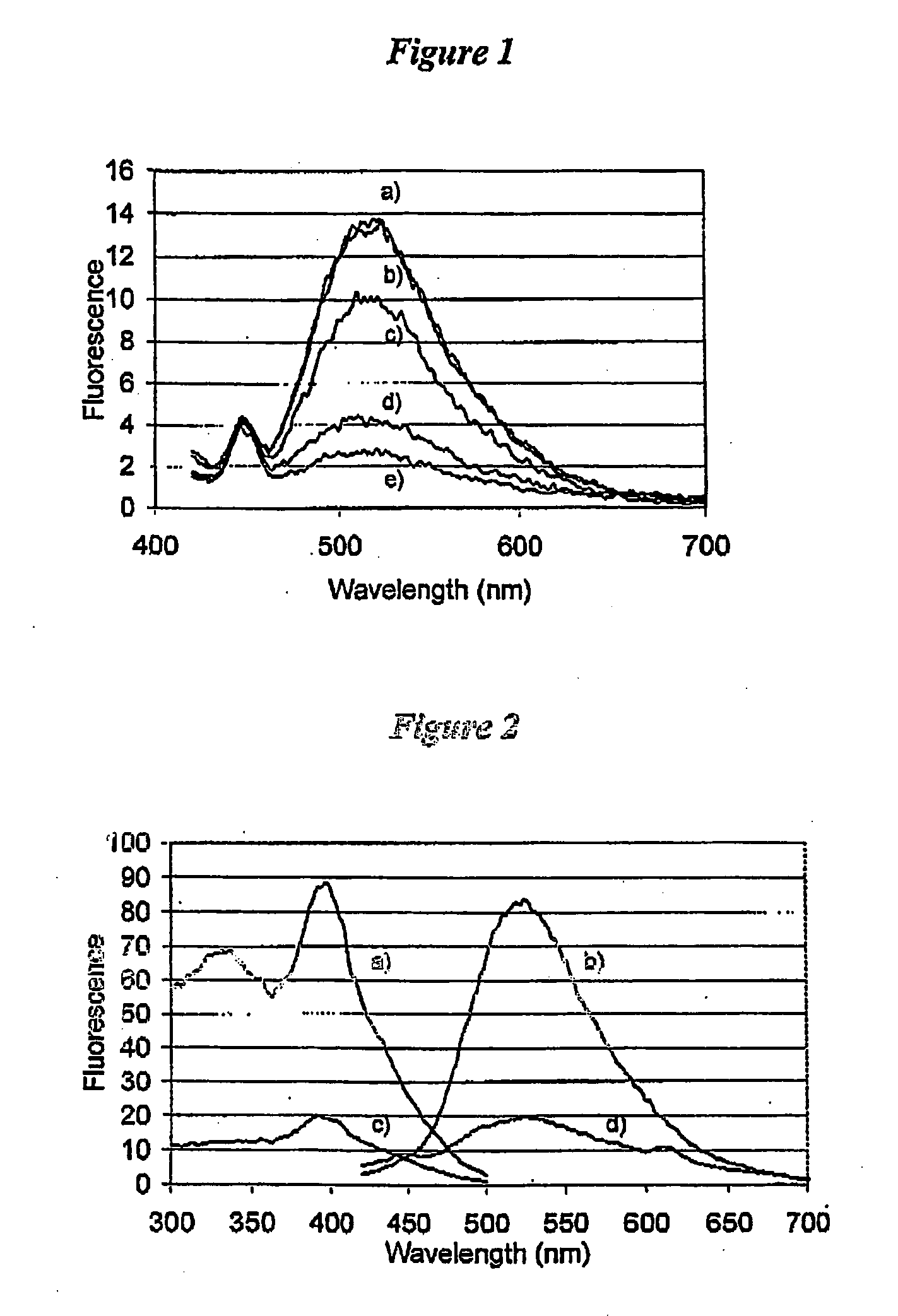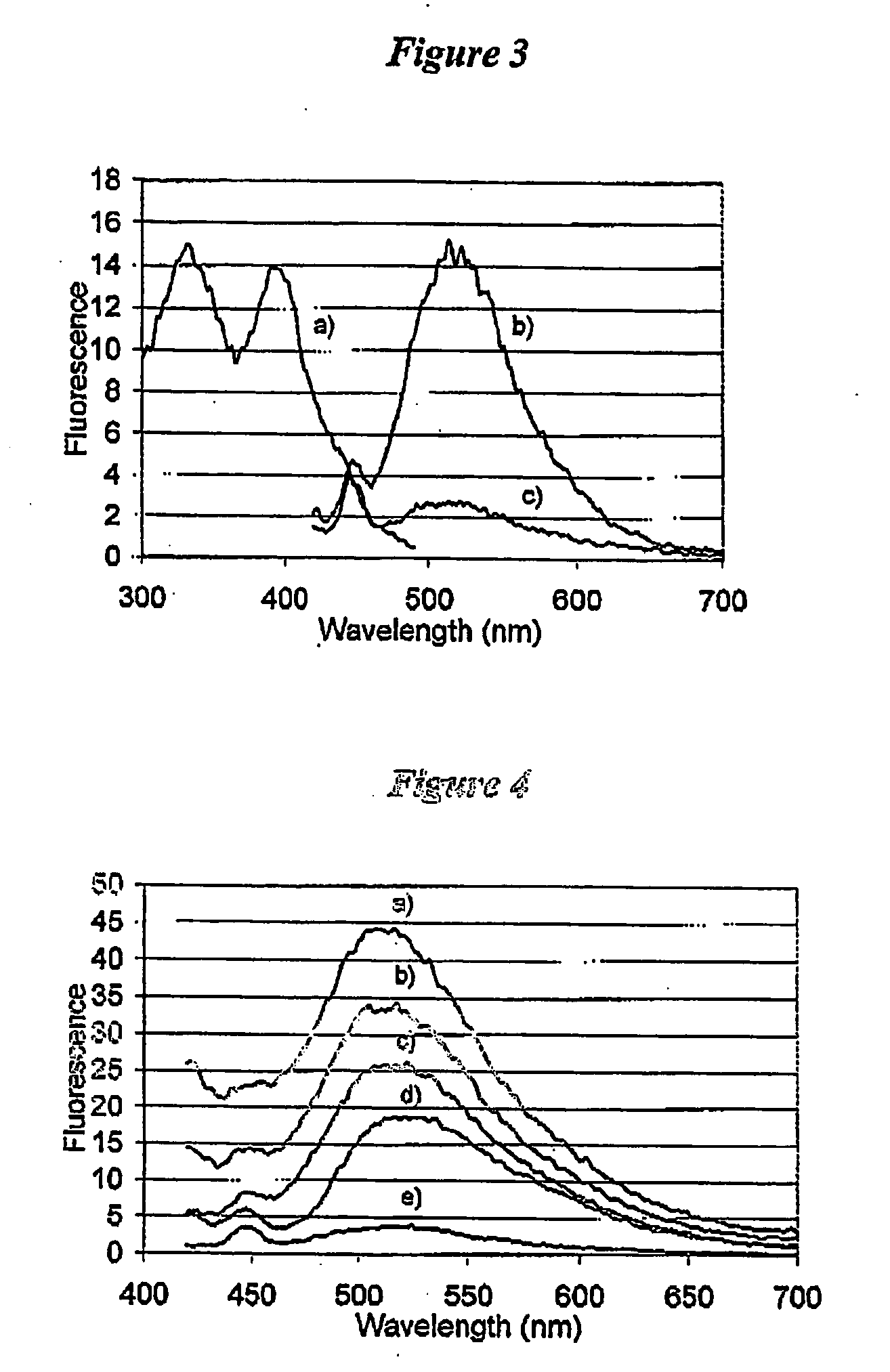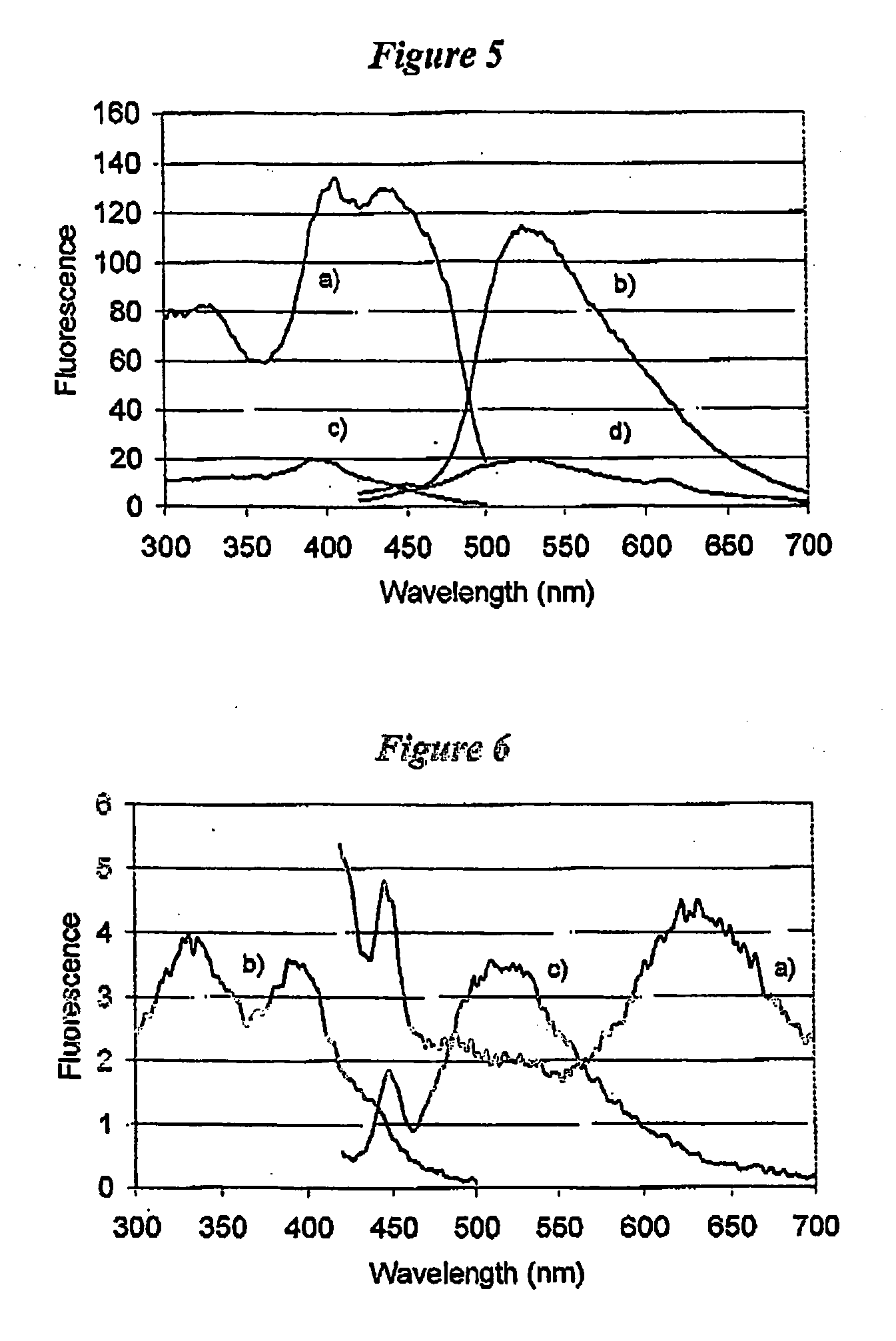Method of enhancing fluorescence
a fluorescence and fluorescence technology, applied in the field of fluorescence enhancement, can solve the problems of limited use of powerful lasers in many applications, and general unsuitability for tagging of organic molecules other than nucleic acids, so as to improve the stability of fluorescent dye/organic molecule complexes, enhance the fluorescence of fluorescent dyes, and increase the stokes' shift
- Summary
- Abstract
- Description
- Claims
- Application Information
AI Technical Summary
Benefits of technology
Problems solved by technology
Method used
Image
Examples
example 1
Effect Bases, Acids and Detergents on Fluorescence of Epicocconone
[0121] To illustrate the enhancement and an increase in the Stokes' shift when epicocconone is in the presence of an amine, fluorescence measurements were recorded in solution of epicocconone with a variety of amines, acids and detergents. It was found that a combination of an amine and a detergent enhances the fluorescence and causes an increase in the Stokes' shift. Inorganic base such as NaHCO3 caused a loss of fluorescence and the addition of a detergent did not recover the fluorescence.
[0122] Fluorescence spectroscopy was carried out using a Perkin Elmer LS 50B Luminescence Spectrometer (Perkin Elmer, Melbourne Australia). Freshly prepared solutions were placed into a Hellma Quartz SUPRASIL precision cell and the cell was then placed into the spectrometer. Typically a solution was 3 mL in volume and the components were added using a Gilson M-1000 Microman positive displacement pipette. The components and their...
example 2
Measurement of Protein Concentration Using Fluorescence Enhancing Combinations
Components
[0196] Part A: Deep Purple™ formulated in 80% (v / v) dimethyl sulfoxide and 20% (v / v) acetonitrile at Absorbance550 nm=0.30.
[0197] Part B: A 10× solution is prepared as shown in Table 1.
ReagentConcentrationSDS3%w / vNaHCO3200mMAcetonitrile25%v / vWater75%v / v
[0198] A 1× working solution of the kit is prepared by mixing together 8 parts water and 1 part of each of component Part A and Part B.
Protocol
[0199] A two-fold dilution series of protein standard of bovine serum album was prepared in water over the range 10 ng / mL-100 μg / mL. Aliquots (50 μL) of protein standard are pipetted in duplicate into wells of microtitre plates. Fifty-μL aliquots of water are added as protein free controls. To each well is added an equal volume (50 μL) of 1× working solution.
[0200] Fluorescence is then allowed to develop for at least 5 min prior to measurement. Protein standards and experimental samples are prepar...
example
[0202] Sigma bovine serum albumin (Castle Hill, NSW, Australia; Cat. A3059) was suspended at a concentration of 800 μg / mL in water and two-fold diluted to final concentration of 0.76 ng / mL. Fifty-μL aliquots were plated out, in triplicate, into a Greiner (Interpath Services, West Heidelberg, VIC) 96-well plate (Cat. 655096). FIG. 36 shows an image of the microtitre plate captured by the Typhoon laser-based imager (532 nm laser, 610 BP 30 emission filter). FIGS. 37A and 37B show plots of fluorescence data plotted against BSA concentration per mL in the range of 12 ng-100 μg / mL
Gel Staining
Materials and Methods
[0203] Invitrogen Bis-Tris 10-well 12% polyacrylamide gels were prepared and run according to the manufacturer's instructions (NuPAGE Technical Guide, Version D, Aug. 26 2002. IM-1001). Amersham Biosciences (Castle Hill, NSW, Australia) SDS Low Molecular Weight protein markers were prepared and two-fold diluted in Invitrogen LDS sample buffer (Mt Waverly, VIC, Australia, Cat...
PUM
| Property | Measurement | Unit |
|---|---|---|
| green wavelengths | aaaaa | aaaaa |
| wavelengths | aaaaa | aaaaa |
| molecular weight | aaaaa | aaaaa |
Abstract
Description
Claims
Application Information
 Login to View More
Login to View More - R&D
- Intellectual Property
- Life Sciences
- Materials
- Tech Scout
- Unparalleled Data Quality
- Higher Quality Content
- 60% Fewer Hallucinations
Browse by: Latest US Patents, China's latest patents, Technical Efficacy Thesaurus, Application Domain, Technology Topic, Popular Technical Reports.
© 2025 PatSnap. All rights reserved.Legal|Privacy policy|Modern Slavery Act Transparency Statement|Sitemap|About US| Contact US: help@patsnap.com



